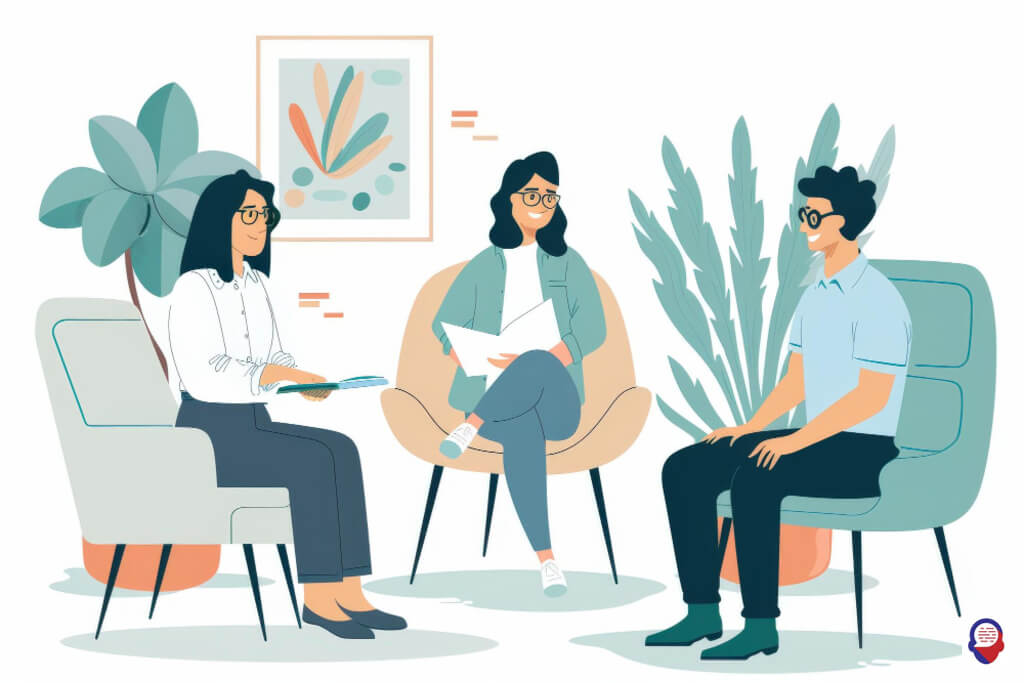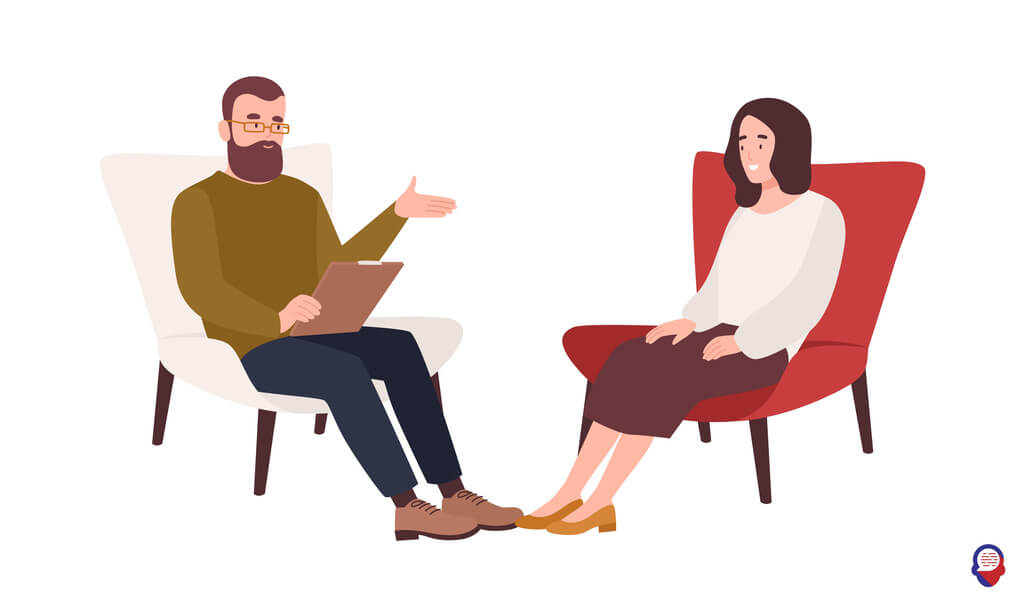Heal Your Mood by Connecting: Your Guide to IPT
Have you ever noticed how your mood can plummet after an argument with a loved one? Or how a major life change, like a new job or the loss of a friend, seems to cast a shadow over everything? It’s not your imagination. Our emotional well-being is deeply, fundamentally tied to the quality of our relationships and our social world. This simple but profound truth is the very heart of a powerful and effective form of therapy: Interpersonal Psychotherapy, or IPT.
This approach offers a clear, structured path to feeling better, not by digging endlessly into your distant past or by asking you to simply change your thoughts, but by focusing on the here and now of your connections with others. It operates on the principle that by healing our relationships, we can heal our minds. It’s a practical, time-limited, and evidence-based treatment that has helped countless people find relief from depression and other emotional struggles by strengthening the very human bonds that give our lives meaning.

What Exactly Is Interpersonal Psychotherapy?
Interpersonal Psychotherapy is a structured, short-term therapy that helps people resolve their psychological distress by improving their current relationships with others. It is built on the straightforward idea that our moods and our interpersonal lives are intrinsically linked, meaning that what happens between you and other people directly impacts how you feel.
Unlike some other therapies, IPT doesn’t spend years exploring childhood experiences. Instead, it zeroes in on your present-day life and the recent events that have contributed to your distress. It’s a collaborative, supportive process where you and your therapist become a team, working together to understand and solve the relationship problems that are fueling your symptoms.
Originally developed in the 1970s as a treatment for major depression, IPT has since proven effective for a wide range of emotional difficulties. Its strength lies in its clarity and focus. By concentrating on improving interpersonal functioning, IPT provides tangible skills and new perspectives that can lead to significant and lasting relief.

How Does IPT Actually Work?
IPT works by systematically identifying a primary interpersonal problem area that is connected to your symptoms and then developing targeted strategies to resolve issues within that area. This focused approach helps to alleviate psychological distress, like depression or anxiety, by directly addressing its relational triggers.
The entire process is typically completed within a structured timeframe, usually 12 to 16 weekly sessions. This journey is broken down into three distinct phases, each with its own specific goals, guiding you from understanding your problem to actively solving it and preparing for a healthier future.

What Happens in the Initial Phase?
The first few sessions, typically one to three, are dedicated to building a clear picture of your situation and creating a roadmap for therapy. Your therapist will conduct a thorough assessment, listening carefully to your concerns and learning about your symptoms in the context of your life.
A key part of this phase is creating an "interpersonal inventory." This is a detailed review of your significant current and past relationships, including your family, partners, friends, and even colleagues. Together, you will map out who the important people in your life are, exploring the strengths and weaknesses of each connection. This process helps to illuminate the patterns and specific events that are linked to the onset of your symptoms.
During this time, your therapist will also explain the IPT model, framing your depression or distress as a treatable medical condition. This helps to reduce self-blame and empowers you by assigning you the "sick role," which means you are not responsible for being unwell, but you are responsible for working towards getting better. Finally, you and your therapist will collaboratively identify one of four key problem areas to be the central focus of your work together.

What Are the Four Main Problem Areas in IPT?
The four main problem areas in IPT are unresolved grief, interpersonal disputes, role transitions, and interpersonal deficits. By linking your symptoms to one of these specific, manageable areas, the therapy becomes focused and goal-oriented, providing a clear path toward recovery.
These categories cover the most common ways that our relationships and life circumstances can trigger and perpetuate emotional distress. Choosing a single area to concentrate on does not mean ignoring other issues, but rather it provides a powerful lever for change. By resolving the primary problem, many other related difficulties often improve as well.

How Does IPT Address Unresolved Grief?
Unresolved grief, sometimes called complicated grief, is the focus when the natural mourning process following the death of a significant person has stalled or become distorted. This can happen when feelings are suppressed, the loss is sudden and traumatic, or the relationship with the deceased was ambivalent or difficult.
In these cases, the goal of IPT is to help you successfully mourn. This doesn’t mean "getting over it," but rather helping you process the complex emotions tied to the loss. Your therapist will help you re-establish interests and relationships that can begin to fill the void left by the deceased, allowing you to find new meaning and connection.
The therapeutic work involves reconstructing your relationship with the person who has died, acknowledging both the positive and negative aspects of it. You will be encouraged to explore your feelings fully in a safe environment, allowing the natural grieving process to resume. This helps you to eventually come to terms with the reality of the loss and move forward with your life, while still honouring the memory of the person you lost.

What Are Interpersonal Disputes?
Interpersonal disputes refer to situations where you are in an ongoing conflict with a significant person in your life, such as a spouse, partner, family member, friend, or coworker. These conflicts arise from differing expectations between you and the other person, leading to tension, arguments, and emotional pain.
IPT helps you to identify the stage of the dispute you are in. It could be renegotiation, where you and the other person are actively trying to find a solution. It might be an impasse, a frustrating stalemate where communication has broken down and you are both stuck. Or it could be dissolution, where the conflict is so severe that the relationship is ending or has already ended.
Once the stage is identified, your therapist helps you develop a plan. This often involves improving your communication skills, learning to express your needs more clearly, and understanding the other person’s perspective. Through techniques like communication analysis and role-playing, you can practice new ways of interacting that can either help resolve the conflict or help you navigate the end of the relationship in a healthier way.

How Does Therapy Help with Role Transitions?
Role transitions are the focus when your distress is linked to a major life change. Life is full of transitions, and while many are positive, they all involve change and loss, which can be stressful and trigger depression or anxiety. Examples include starting a new job, getting married, becoming a parent, retiring, moving to a new city, or receiving a medical diagnosis.
The core challenge of a role transition is letting go of the old role while adapting to the new one. IPT helps you to mourn the loss of your former role, acknowledging what you have left behind. At the same time, it supports you in developing a sense of mastery and confidence in your new role.
Your therapist will help you to see the transition as an opportunity for growth. You will explore the demands and opportunities of the new role, identify any social support you need, and develop new skills to help you succeed. The goal is to help you embrace the change not as a source of stress, but as a new chapter in your life.

What if I Struggle with Interpersonal Deficits?
Interpersonal deficits, sometimes referred to as interpersonal sensitivity, is the chosen problem area when an individual has a long-standing history of social isolation or consistently unfulfilling relationships. This is for people who may feel shy, struggle to initiate conversations, or find it difficult to maintain friendships over time.
Unlike the other three areas, which focus on recent events, this area addresses more enduring patterns. The goal of therapy is to reduce your social isolation and help you build a stronger, more supportive social network. It is not about blaming you for your difficulties, but about empowering you with the skills you need to connect with others.
The work might involve examining past relationship patterns to understand what has been holding you back. Your therapist will then help you practice and build social skills in a safe, supportive environment. The focus is often on learning how to initiate, develop, and sustain relationships, ultimately helping you to form the meaningful connections you desire.

What Is the Middle Phase of Therapy Like?
The middle phase is the core of Interpersonal Psychotherapy, typically spanning from session four to around session twelve. This is where the real work of change happens, as you and your therapist actively address the specific problem area you identified in the initial phase.
Each session will usually begin with a check-in, asking how you have been since your last meeting and linking your current mood to the interpersonal events of the past week. This keeps the therapy grounded in your real-life experiences. The remainder of the session is then dedicated to working on your chosen problem area using specific strategies.
Your therapist will be an active and encouraging partner during this phase. They might use techniques like communication analysis to break down a recent difficult conversation, helping you see where things went wrong and how you could handle it differently next time. They may also use role-playing to let you practice new ways of expressing yourself before you try them out in the real world. The focus is always on making tangible progress on your interpersonal goals.

How Does IPT Conclude?
The final phase of IPT, usually the last three or four sessions, is focused on preparing you for the future and ensuring your progress is sustainable. This is a crucial part of the process, designed to help you feel confident in your ability to handle future challenges without your therapist.
A key task in this phase is to explicitly discuss the end of the therapy itself. Ending a positive therapeutic relationship can bring up feelings of loss, so your therapist will help you acknowledge and process these emotions, framing the end of therapy as a sign of your success and independence.
You will review the progress you have made, consolidating the skills and insights you have gained. Your therapist will help you anticipate future challenges and develop a plan for how to manage them using your new interpersonal skills. The goal is to leave you feeling empowered, recognizing your own competence in managing your relationships and your emotional health, and reducing the risk of relapse.

Who Can Benefit Most from Interpersonal Psychotherapy?
IPT is most effective for individuals whose depression, anxiety, or other mood disorders are clearly connected to their relationships and recent life events. If you can point to a specific conflict, a major life change, a recent loss, or a pattern of social difficulty that seems to be driving your distress, IPT could be an excellent fit.
Its primary and most well-researched application is for Major Depressive Disorder. However, its effectiveness has been demonstrated for a growing number of other conditions. It is used as a powerful adjunctive therapy for Bipolar Disorder, helping individuals manage the relationship chaos that can accompany mood episodes.
Furthermore, specific adaptations of IPT have been developed for eating disorders, particularly Bulimia Nervosa and Binge Eating Disorder, where interpersonal triggers often play a significant role. It is also used to treat Post-Traumatic Stress Disorder (PTSD) and various anxiety disorders, especially when the symptoms are maintained by social and relational stress.

How Is IPT Different from Other Therapies?
IPT is distinct because it holds a unique position in the therapeutic landscape, focusing specifically on the connection between your current interpersonal relationships and your mood. This focus on the ‘here and now’ of your social world sets it apart from therapies that primarily target your internal thoughts or your distant past.
While other therapies are highly effective in their own right, IPT offers a different lens through which to understand and solve your problems. Its structured, time-limited nature and its emphasis on practical, real-world change make it a compelling option for many people seeking relief.

How Does it Compare to Cognitive Behavioural Therapy (CBT)?
The main difference between IPT and Cognitive Behavioural Therapy lies in their primary target for change. CBT focuses on identifying and changing negative or distorted thought patterns and behaviours that contribute to emotional distress. IPT, on the other hand, focuses on improving the quality of your interpersonal relationships to alleviate that same distress.
In a CBT session, you might work on a thought record to challenge automatic negative thoughts. In an IPT session, you would instead analyze a recent argument with your partner to improve your communication. Both are structured, evidence-based therapies, but they approach the problem from different angles, one internal (thoughts) and the other external (relationships).

Is IPT a Type of Psychodynamic Therapy?
IPT grew out of psychodynamic principles, particularly the work of attachment theorists who emphasized the profound importance of relationships for human development and well-being. It shares the belief that our connections with others are central to our mental health.
However, IPT diverges significantly from traditional psychodynamic therapy in its practice. It is much more structured, time-limited, and present-focused. It does not typically involve deep exploration of unconscious conflicts, defense mechanisms, or early childhood experiences in the way that long-term psychodynamic therapy does. IPT uses the insights of psychodynamic theory but applies them in a very practical, goal-oriented framework.

What Should I Expect from My IPT Therapist?
You should expect an IPT therapist to be an active, supportive, and non-neutral ally in your journey toward recovery. Unlike the "blank slate" therapist of some older therapeutic models, your IPT therapist is an engaged partner who is very much on your side.
They are not there to passively listen and interpret, but to actively help you make connections between your mood and your life. They will offer direct feedback, suggest strategies, and provide encouragement as you try new ways of relating to others. They act as your advocate, helping you to build the skills and confidence you need to solve your interpersonal problems.
Your therapist will maintain a consistent focus on the agreed-upon problem area, ensuring that each session is productive and moves you closer to your goals. They are your collaborator and your coach, dedicated to helping you achieve lasting change within the brief, focused timeframe of the therapy.
Frequently Asked Questions

How long does IPT typically last? IPT is a time-limited therapy, which is one of its key features. A standard course of treatment typically consists of 12 to 16 weekly sessions, with each session lasting about 50 minutes. This structure provides a clear beginning, middle, and end to the therapeutic process.

Is IPT effective for anxiety? Yes, IPT can be very effective for anxiety, particularly for conditions like social anxiety disorder or generalized anxiety where worry is often triggered and maintained by interpersonal stress. By improving communication, building social confidence, and resolving conflicts, IPT can directly reduce the relational triggers that fuel anxious feelings.

Do I need a formal diagnosis to start IPT? No, you do not need a formal psychiatric diagnosis to benefit from IPT. While it is a well-established treatment for diagnosed conditions like depression, its principles are helpful for anyone whose emotional struggles are tied to relationship issues, life changes, or social difficulties. If you feel your mood is heavily influenced by your connections with others, IPT can offer valuable tools and support.

Is medication used with IPT? IPT can be used effectively either on its own or in combination with psychiatric medication. It was originally developed and tested as a treatment for depression alongside antidepressants and the combination is often highly effective. The decision to use medication is a personal one and should be discussed with your therapist and a medical doctor or psychiatrist. IPT provides the skills to manage relational triggers, while medication can help regulate the underlying biological symptoms, creating a powerful two-pronged approach to recovery.
Life’s challenges often manifest in our relationships, creating stress and emotional pain that can feel overwhelming. At Counselling-uk, we understand that seeking help is a courageous step. We provide a safe, confidential, and professional space for you to explore these challenges. If you feel that your connections with others are at the heart of your struggles, our trained therapists can support you in finding clarity, building stronger bonds, and rediscovering your emotional well-being. You don’t have to navigate this alone. Reach out today and let us help you find your path forward.




IPT focuses on the patient’s interpersonal relationships and how their current relationships might be impacting their mental health. IPT helps patients identify patterns in their relationships and develop skills to improve them. It also helps patients learn how to understand and manage their emotions more effectively. IPT emphasizes communication, problem-solving, and coping skills as key components of successful treatment.